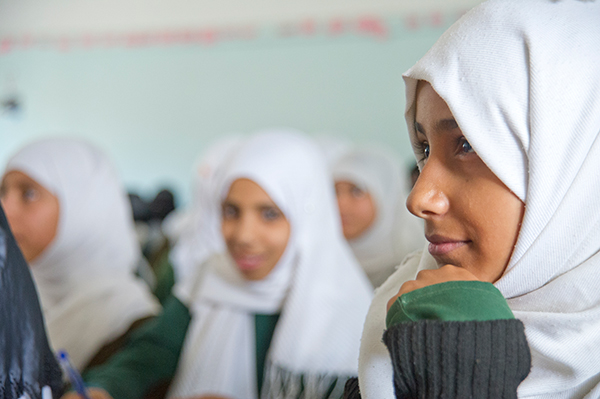
We often strive to get past the numbers and statistics and look deeper, to individual stories and faces. But a UN General Assembly side event hosted by UNICEF I just attended pointed out such shockingly high levels of violence against children—and especially girls—that I am dumbfounded at the scale of this problem.
It is outrageous and unfathomable to think that:
- Almost one quarter of girls aged 15-19 worldwide– almost 70 million—report being victims of some physical violence since their 15th birthday.
- 60 percent of the world’s children between the ages of 2 and 14 are subjected to physical punishment by their caregivers on a regular basis. That’s almost a billion kids.
- One in three adolescent girls aged 15 to 19 worldwide (84 million) have been the victims of emotional, physical or sexual violence committed by their husbands or partners.
- 120 million girls under the age of 20 (about 1 in 10) have been subjected to rape or other forced sexual acts.
What’s the fallout from this prolific violence against our children?
Psycho-social trauma and depression are rampant, and increasingly, adolescent suicide, which is now the leading cause of death among adolescent girls globally.
According to Suzanne Petroni, gender expert at the International Center for Research on Women, adolescents who are socially and economically marginalized have the highest risks for suicide. And Charlotte Feldman-Jacobs, program director for gender at the Population Reference Bureau, says that, “If you look at all the risk factors for suicide listed in the WHO report, the group that would have the least power to overcome these barriers is adolescent girls.”
This metastatic violence against children also undermines their ability to get an education. Learning in schools needs to occur in safe, secure, nurturing environments. Where students have been subjected to sexual or physical violence, harassment or bullying, whether physical or cyber, learning is often the first casualty.
So safe schools are the most fundamental predicates for learning, and need to be at the top of development priorities.
UNICEF has been taking a close look at the issue, and is mobilizing its approach through a “Global Partnership to End Violence Against Children.” It is focusing on the key elements whereby violence can be pushed back, such as social norms, legal protections, supportive relationships with parents, caregivers and families, as well as development of children’s life skills, among other things.
UNICEF deserves high praise for taking on such a multi-layered and deep-rooted social ill, and considerable more resources than it is currently devoting.
But it stands as a challenge to all of us to identify best practices so the school truly becomes a place for security, psychosocial healing, protection and respect.
At the UN General Assembly and its side events, stakeholders are starting to really unpack the new Sustainable Development Goals and grapple with meaningful implementation by 2030. Within just the education goal alone, there are seven ambitious targets across the full spectrum of lifelong learning, and certainly no shortage of challenges to address.
Under Goal 4, the global community envisions schools to be “safe, non-violent, inclusive and effective learning environments for all.” In my view, this is the key to unlocking the rest of the education targets. But more importantly, its one of the most vital things we can do to give kids the childhoods and adolescence they deserve.
As I reflect back on all the panels and events I attended, and all the education issues the world is calling on its leaders to address, I don’t know of any more critical than ending violence against our children.
Cris Revaz is Creative’s Senior Education Counsel, Office of the President.

